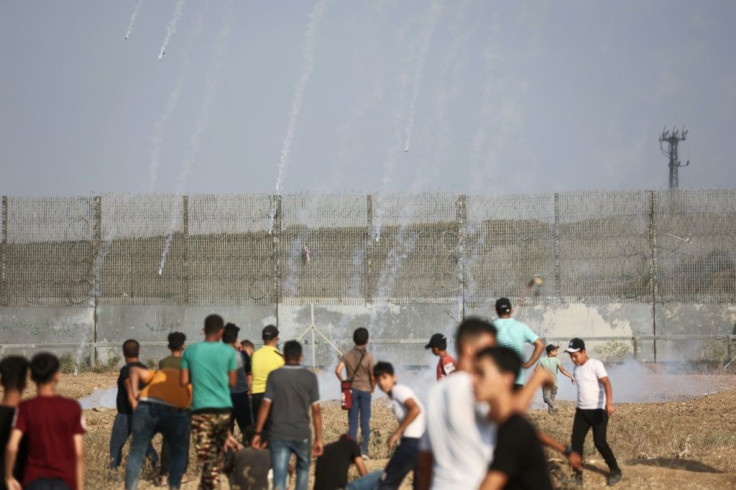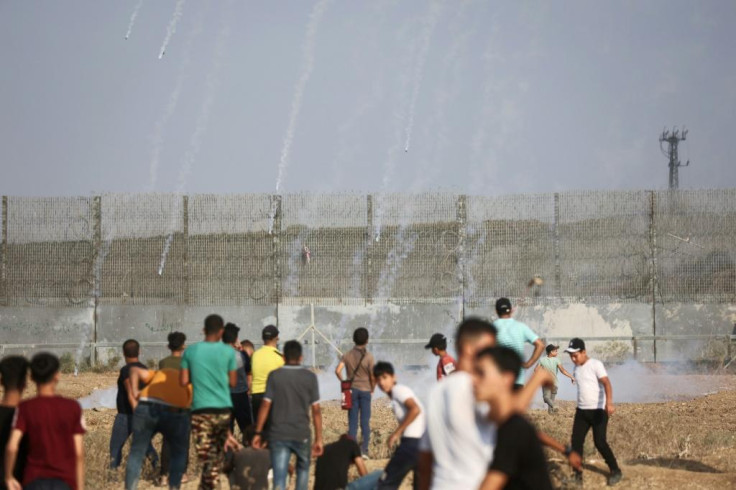Israel Builds Massive Wall 'Of Iron, Sensors And Concrete' On Gaza Border Against Hamas

Israel has announced that it completed the construction of a massive 40-mile-long barrier along the Gaza border that runs above and below ground.
The security fence, which took 3.5 years to build, is equipped with sensors to detect tunnels, a six-meter steel fence, a network of radar arrays and other surveillance sensors; and remote-controlled weaponry, reported The Times Of Israel.
The wall can stop cross-border attack tunnels from the Palestinian enclave. "This barrier, a creative, technological project of the first order, denies Hamas one of the capabilities that it tried to develop and puts a wall of iron, sensors, and concrete between it and the residents of the south," Defense Minister Benny Gantz was quoted by the news outlet Tuesday.
Several command centers have also been built along the border as part of the project. The wall stretches all along the Gaza border and extends out to sea to ensure that the terror groups do not dig underwater tunnels as they did in the past.
According to the Israeli Defense Ministry, it took more than 1,200 workers and 140,000 tons of iron and steel to construct the wall.
Over 330,000 trucks of sand, dirt, and rocks were removed for the construction of the barrier, which required two million cubic meters of concrete and enough rebar that if laid out in a single line would reach Australia, the report added.
The military wing of Hamas, which governs Gaza, had repeatedly used tunnels to confront the Israeli army during the four fierce wars between 2008 and 2021.
However, it was during the 2014 Gaza war that Israel decided to construct the barrier. Christened 'Operation Protective Edge,' the project focused primarily on countering the tunnel threat.
Hamas, which rules the Gaza Strip, had resorted to this method, including in 2014, when they dug under Israeli positions within the enclave to plant bombs. In 2006, Hamas members tunneled into Israel, killing three soldiers and capturing a fourth, Gilad Shalit. Shalit remained a captive for five years before a swap deal with Israel ensured his release.
However, off late Hamas has moved away from digging tunnels as Israel ramped up measures to locate such tunnels.
Despite this, the tunnel threat is not eliminated, Brig.-Gen. Eran Ofir, who overlooked the barrier construction told CBN News. "I can sign off on the fact that there is a big, significant system that is meant to ensure that no tunnels enter the State of Israel. There is no 100 percent sign-off on anything in life, but we believe that this underground wall gives a very good solution to this issue," he said.

Photo: AFP / SAID KHATIB





















